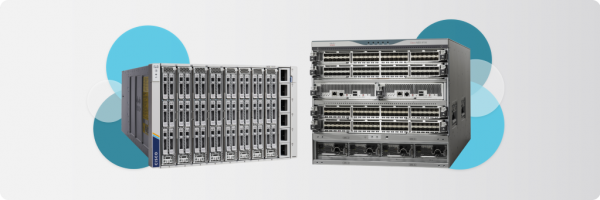Delivering an optimal user experience for business-critical applications is a non-negotiable element for successful businesses. Architecting infrastructure that meets application and SLA requirements is vital to delivering the superior performance on which great user experiences rest. Today, this infrastructure is often built with the latest compute technology, high-performance flash storage arrays, and enterprise networking. Combining modern data protection and infrastructure is also key to availability, because pairing data protection with the right backup infrastructure can help an organization respond to its unique demands.
Unfortunately, deploying on-premises infrastructure can be complex, time consuming and costly. This is where converged infrastructure from FlashStack comes in. Built in partnership by Cisco and Pure Storage, FlashStack offers everything a modern infrastructure platform needs—more simplicity, more flexibility, and more speed. FlashStack delivers cloudlike experiences and economics to your data center through easy adoption, unified management, and fewer siloes.
FlashStack Data Protection with Veeam
Now, Cisco and Pure Storage have partnered with Veeam—a consistent Leader in the Gartner Magic Quadrant for Data Center and Recovery Solutions—to build a Cisco Validated Design (CVD) that provides a complete set of data protection options for FlashStack. These options use Pure FlashArray//C, Cisco UCS C240 AFF Rack Server or UCS S3260 Storage Server, and Veeam software. FlashStack with Veeam Data Protection provides an end-to-end solution that includes backup and archive to on-premises and public clouds.
These new CVDs offer three target architectures, depending on restore requirements, backup throughput, storage efficiency and capacity, as shown in Figure 1.
FlashStack with Veeam data protection combines two solutions required to deliver optimal user experiences:
Converged infrastructure meets modern data protection
Figure 1 FlashStack backup environment with three potential backup targets
FlashStack provides pre-integrated, pre-validated converged infrastructure that combines compute, network and storage—as I mentioned earlier—into a platform designed for business-critical applications and a wide variety of workloads. This platform delivers maximum performance, increased flexibility, and rapid scalability. And it enables rapid, confident deployment as well as reducing the management overhead consumed by patches and updates.
Modern infrastructure also needs modern data protection, and Veeam’s data protection platform integrates backup and replication with advanced monitoring analytics and intelligent automation. This platform works with FlashStack to deliver performance and features to help ensure that your data and applications are available while also unlocking the power of backup data.
Depending on your requirements, you can choose from several infrastructure platforms on which to run your data protection environment:
FlashArray//C: fast restores with storage efficiency (dedupe and compression)
Veeam, with FlashArray//C from Pure Storage and Cisco UCS C220 M5 servers, delivers maximum flash-based performance that can handle multiple workloads, while paired with Pure Storage data efficiency features. This solution offers storage capacity without compromise, along with flash-based performance at close to disk economics. It targets multiple workloads and large scale deployments such as:
◉ All-QLC flash storage for cost-effective, capacity-oriented workloads
◉ Advanced data services and technologies for guaranteed data efficiency
◉ Scale-up, scale-out architecture to meet the capacity expansion requirements of data-intensive workloads
◉ Non-disruptive, Evergreen architecture that eliminates risky, complex, and costly upgrades
C240 AFF: fast restores and high backup throughput
Veeam, with Cisco UCS C240 M5 all-flash storage servers, delivers the performance and flexibility needed to run and support virtually any workload, while meeting the requirements of a sophisticated data protection environment. It features:
◉ Architectural and compute flexibility
◉ Multiple workload capacity
◉ Best-in-class backup and restore performance
◉ Scale-out capability
S3260: Dense platform with optimal restores and high backup throughput
Veeam, with Cisco UCS S3260 M5 storage servers, delivers superior performance with massive scale-up capability and disk economics. This solution includes Cisco Intersight or UCS Manager to reduce cost of ownership, simplify management, and deliver consistent policy-based deployments and scalability.
This dense storage platform, combined with FlashStack and Veeam, offers massive storage capacity and high backup throughput for multiple workloads. You can run Veeam components such as Proxy, Console and Repository on a single compute and storage platform with the ability to scale both compute and storage through Veeam scale-out backup repositories
You can deploy a scale-out backup storage platform on a cluster of Cisco UCS S3260 storage servers, providing an S3 archive target for the Veeam cloud tier. This tier features scale-out backup repository architecture, which makes it possible to move older backup files to more cost-effective cloud or on-premises object storage. Archiving backup in the cloud tier can result in up to 10X savings on long-term data retention costs and help you align with compliance requirements by storing data as long as needed.
Power and data protect your business-critical applications
Organizations are upgrading their infrastructure to accelerate innovation, increase agility, and reduce complexity while enabling rapid scalability. FlashStack brings the latest in compute, network, and storage components together in a single, pre-validated architecture that speeds time to deployment, reduces overall IT costs and deployment risk, and is tailored for specific workloads.If you’re an existing FlashStack customer or use other backup solutions, check out the following links to learn more about how this Cisco Validated Design can power and protect your applications and help you consistently deliver optimal user experiences for the applications that contribute to your success.






























